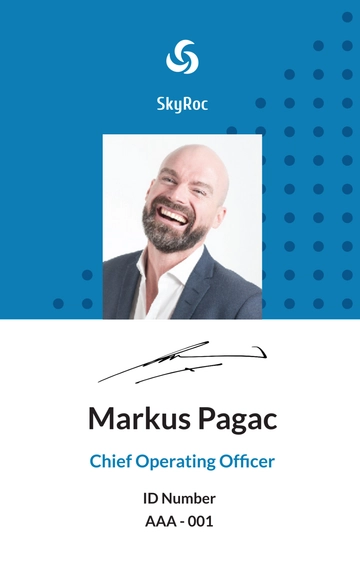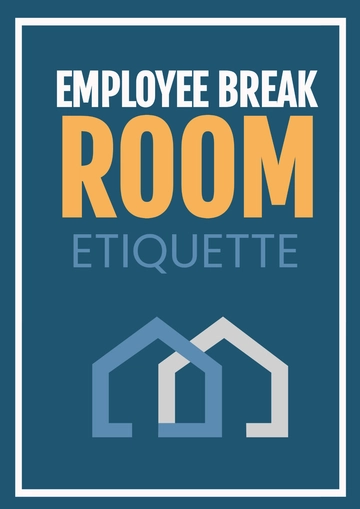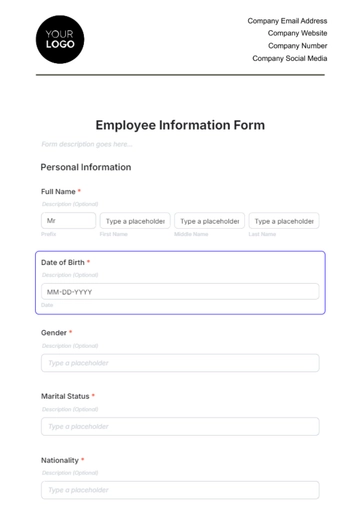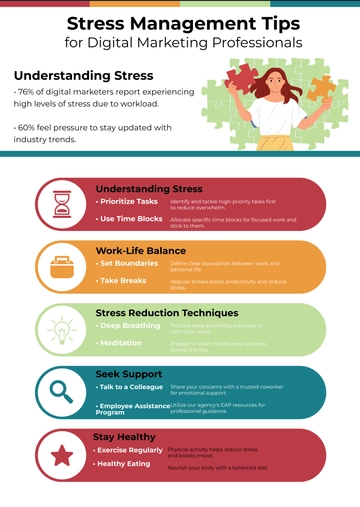Free Employee Relationship Strategy & Planning Document HR

Introduction
1.1 Welcome Message
Welcome to the Comprehensive Anti-bullying Strategy Manual of [Your Company Name]. At [Your Company Name], we are dedicated to creating a harmonious and inclusive work environment where every individual is treated with respect and dignity. This manual serves as a crucial resource in our ongoing commitment to preventing and addressing bullying in the workplace.
1.2 Purpose of the Manual
The primary purpose of this manual is to provide comprehensive guidance on our anti-bullying efforts. It outlines our strategies for creating a safe, respectful, and inclusive work environment. This manual is intended to:
Educate all employees about our stance against bullying.
Clarify the definition of bullying as it applies to our organization.
Establish clear roles and responsibilities for all stakeholders.
Detail procedures for reporting and responding to bullying incidents.
Provide resources and support for employees affected by bullying.
1.3 Scope and Applicability
This manual applies to every individual associated with [Your Company Name], including but not limited to employees, contractors, temporary workers, interns, and visitors. It is a fundamental reference for promoting respectful behavior and preventing bullying within our organization.
1.4 Contact Information
Should you have any questions, concerns, or require assistance related to this manual or any bullying-related matters, please do not hesitate to reach out to our dedicated Human Resources team:
[Your Name]
[Your Title]
[Your Company Email Address]
[Your Direct Phone Number]
Policy Statement
2.1 Commitment to Anti-bullying
[Your Company Name] is steadfast in its commitment to maintaining a work environment that is free from bullying in all its forms. We firmly believe that every employee deserves to work in an atmosphere characterized by mutual respect, fairness, and support. Bullying of any kind is inconsistent with our values, and we hold every individual accountable for upholding this commitment.
2.2 Legal and Regulatory Compliance
Our anti-bullying policy aligns with all applicable federal, state, and local laws and regulations governing workplace conduct. We recognize that compliance with these laws is both a legal and moral obligation. To ensure that we are in full compliance, we continually monitor and adapt our policies to reflect the latest legal requirements.
Definition of Bullying
3.1 Definition of Bullying at [Your Company Name]
At [Your Company Name], we recognize that it is essential to have a clear and comprehensive understanding of what constitutes bullying within our organization. Our definition of bullying encompasses any repeated, intentional, and harmful behavior, whether verbal, physical, or psychological, that occurs within the workplace or in any work-related context. Bullying behavior may include, but is not limited to:
Verbal Bullying: This involves the use of derogatory, belittling, or offensive language, including insults, name-calling, or offensive jokes, either in person or through written communication.
Physical Bullying: Physical bullying includes any aggressive physical contact, such as pushing, hitting, or damaging personal property, with the intent to harm or intimidate.
Psychological Bullying: Psychological bullying encompasses actions that are designed to undermine an individual's self-esteem, confidence, or emotional well-being. This may include constant criticism, humiliation, or spreading false rumors.
Cyberbullying: In the age of digital communication, bullying can also take place online. Cyberbullying involves the use of electronic devices and platforms to harass, threaten, or humiliate others. It may include sending offensive messages, spreading false information online, or creating a hostile online environment.
Social Isolation: Deliberately excluding an individual from social activities or professional opportunities, or creating an environment where they feel isolated or marginalized, is also considered a form of bullying.
Goals and Objectives
4.1 Anti-bullying Goals
Our overarching anti-bullying goals at [Your Company Name] are as follows:
Promote Respect: Foster a workplace culture where respect, empathy, and inclusivity are core values, and where bullying has no place.
Prevent Bullying: Implement proactive measures to prevent bullying incidents from occurring within our organization.
Respond Effectively: Ensure that all reported instances of bullying are promptly and thoroughly addressed, with appropriate actions taken.
Support Affected Individuals: Provide comprehensive support to employees who have experienced bullying, including access to counseling, resources, and protection from retaliation.
4.2 Objectives for Prevention and Response
To achieve our anti-bullying goals, we have established the following key objectives:
Prevention Objectives:
Educate and Train: Conduct regular training and awareness programs to educate employees about the different forms of bullying, its consequences, and how to prevent it.
Promote Reporting: Encourage a culture where employees feel safe reporting bullying incidents and provide multiple channels for reporting.
Address Underlying Issues: Identify and address underlying issues that may contribute to bullying behavior, such as stress, conflict, or workplace dynamics.
Response Objectives:
Thorough Investigations: Ensure that all reported bullying incidents are thoroughly investigated in a fair and confidential manner.
Timely Actions: Take appropriate actions, including disciplinary measures, when bullying is substantiated, while respecting due process and fairness.
Support and Recovery: Provide affected individuals with the necessary support, including counseling, conflict resolution, and protection from further harm.
Roles and Responsibilities
5.1 Responsibilities of Management
Leadership and management play a critical role in our anti-bullying efforts. Their responsibilities include:
Setting the Tone: Lead by example and set the tone for a respectful and inclusive workplace culture.
Supporting Prevention: Support and actively participate in anti-bullying initiatives, including training and awareness programs.
Responding to Reports: Promptly address and report any bullying incidents brought to their attention.
5.2 Responsibilities of Human Resources
The Human Resources department serves as a central hub for addressing workplace bullying. HR responsibilities encompass:
Policy Implementation: Ensure that anti-bullying policies and procedures are effectively implemented and communicated to all employees.
Investigations: Conduct impartial and thorough investigations of reported bullying incidents, maintaining confidentiality and professionalism throughout the process.
Support Services: Coordinate support services for affected individuals, including counseling and resources for recovery.
5.3 Responsibilities of Employees
All employees share a collective responsibility in maintaining a respectful workplace. Their roles include:
Respectful Conduct: Treat colleagues with respect, kindness, and consideration, refraining from any behavior that may harm or intimidate others.
Reporting Bullying: Promptly report any witnessed or experienced bullying incidents using designated reporting channels.
Cooperation in Investigations: Cooperate fully with investigations into bullying incidents, providing accurate information as needed.
Prevention Strategies
6.1 Promoting a Respectful Workplace
Promoting a respectful workplace culture is essential in preventing bullying. To achieve this, we will:
Lead by Example: Leadership will exemplify respectful behavior, fostering an environment where employees feel valued and heard.
Communication: Encourage open and transparent communication, ensuring that all employees have a voice and avenues to express concerns.
Conflict Resolution: Provide training on conflict resolution and interpersonal communication skills to equip employees with the tools to address issues constructively.
6.2 Training and Awareness Programs
To raise awareness and educate employees about bullying prevention, we will:
Anti-Bullying Training: Conduct regular anti-bullying training sessions for all employees, emphasizing the importance of respectful conduct.
Recognizing Bullying: Train employees to recognize signs of bullying and empower them to intervene when they witness bullying behavior.
Cyberbullying Awareness: Educate employees about the dangers of cyberbullying and appropriate online conduct.
6.3 Creating a Reporting Culture
We aim to create a culture where employees feel safe reporting bullying incidents. To achieve this, we will:
Multiple Reporting Channels: Establish multiple reporting channels, including anonymous options, to accommodate various comfort levels.
Protection from Retaliation: Emphasize our commitment to protecting employees from retaliation for reporting bullying incidents.
Regular Communication: Regularly communicate our anti-bullying efforts, including reporting statistics and outcomes, to maintain transparency and trust within the organization.
Response and Reporting Procedures
7.1 Reporting Bullying Incidents
Prompt reporting of bullying incidents is crucial to our anti-bullying efforts. Employees are encouraged to report incidents using the following steps:
Notify a Supervisor or Manager: If you experience or witness bullying, report it to your immediate supervisor or manager. They are responsible for initiating the reporting process.
Alternative Reporting Channels: If you are uncomfortable reporting to your supervisor or manager or if they are involved in the incident, you can report directly to the Human Resources department or use our anonymous reporting hotline.
Documentation: Provide as much detail as possible when reporting, including dates, times, locations, individuals involved, and any supporting evidence, such as emails or messages.
7.2 Investigation Process
All reported bullying incidents will be investigated thoroughly and impartially. The investigation process includes:
Initial Assessment: HR will conduct an initial assessment to determine the seriousness of the incident and whether interim measures, such as reassignment or a temporary leave, are necessary to protect the victim.
Interviews and Documentation: HR will interview all parties involved, review any relevant documents, and collect evidence.
Resolution: Based on the findings, appropriate actions will be taken, including counseling, corrective measures, or disciplinary actions in accordance with company policies and relevant laws.
7.3 Consequences for Bullying
Consequences for bullying behavior at [Your Company Name] may include disciplinary actions, up to and including termination of employment, depending on the severity and recurrence of the offense. We are committed to ensuring that the consequences are fair, consistent, and proportionate to the misconduct.
Support and Resources
8.1 Employee Support Services
We are dedicated to supporting employees who have been affected by bullying. Support services include:
Counseling Services: Access to professional counseling services for emotional and psychological support.
Conflict Resolution Assistance: Assistance in resolving interpersonal conflicts or disputes.
Recovery Resources: Access to resources and programs designed to aid in the recovery and well-being of affected individuals.
8.2 Confidentiality and Whistleblower Protection
Confidentiality is of utmost importance in bullying cases. We maintain strict confidentiality throughout the reporting and investigation process. Moreover, we have policies in place to protect whistleblowers who report bullying in good faith. Retaliation against individuals who report bullying is strictly prohibited and will be addressed promptly.
Training and Education
9.1 Employee Training Programs
Our comprehensive anti-bullying training programs for employees include:
Bullying Awareness: Training to recognize bullying behavior and understand its impact on individuals and the organization.
Conflict Resolution: Training on conflict resolution and effective communication to prevent and address workplace conflicts.
Cyberbullying Awareness: Education on identifying and addressing cyberbullying in digital environments.
9.2 Supervisor and Manager Training
Supervisors and managers receive additional training to:
Handle Reports: Equip them with the skills to handle reports of bullying, ensuring fair and impartial investigations.
Promote a Respectful Culture: Train them to lead by example and promote a culture of respect within their teams.
9.3 Evaluation of Training Effectiveness
To ensure the effectiveness of our training programs, we regularly evaluate the following:
Feedback and Surveys: Collect feedback from participants to continuously improve training content and delivery.
Assessment of Behavior Change: Monitor changes in behavior and attitudes to assess the impact of training on bullying prevention.
Compliance: Ensure that all employees, including supervisors and managers, complete mandatory training.
Communication Plan
10.1 Communication Channels
Effective communication is vital in our anti-bullying efforts. We use various channels to disseminate information, including:
Communication Channel | Purpose |
Intranet and Email | For internal announcements, policy updates, and educational materials. |
Employee Meetings | Regular meetings to discuss anti-bullying initiatives and answer questions. |
Posters and Brochures | Displayed in common areas to raise awareness and provide reporting instructions. |
Social Media | For sharing articles, videos, and success stories related to our anti-bullying efforts. |
10.2 Internal and External Communication
We are committed to transparency and proactive communication, both internally and externally. Internally, we ensure that all employees are informed about our anti-bullying initiatives and encouraged to participate. Externally, we may communicate our commitment through our website, social media, and public statements to demonstrate our dedication to creating a respectful workplace.
10.3 Reporting Mechanisms
To facilitate reporting and communication related to bullying, we provide the following mechanisms:
Internal Reporting: Employees can report bullying incidents internally through HR, supervisors, or designated reporting contacts.
Anonymous Reporting Hotline: An anonymous hotline is available for employees who wish to report incidents without disclosing their identity.
Online Reporting Portal: An online portal allows employees to submit bullying reports securely and confidentially.
Data Collection and Monitoring
11. 1 Data Collection Methods
To monitor our anti-bullying efforts, we employ the following data collection methods:
Incident Reports: Records of reported bullying incidents, including details, dates, parties involved, and actions taken.
Surveys and Feedback: Regular surveys and feedback mechanisms to gauge employee perceptions and experiences regarding bullying prevention.
Training Records: Documentation of employee participation in anti-bullying training programs.
11.2 Data Analysis and Reporting
Data collected is analyzed regularly to:
Identify trends or patterns in bullying incidents.
Evaluate the effectiveness of prevention strategies.
Assess the impact of training programs.
Ensure compliance with anti-bullying policies.
Regular reports are generated and shared with relevant stakeholders to inform decision-making and improvements.
11.3 Continuous Improvement
Our commitment to addressing bullying remains dynamic and adaptive. We continually strive for improvement through:
Feedback Mechanisms: Encouraging employees to provide feedback on anti-bullying initiatives.
Periodic Assessments: Conducting periodic assessments of our anti-bullying strategy and policies.
Adjustments: Making necessary adjustments based on data and feedback to enhance our approach.
Evaluation and Review
12.1 Regular Review Schedule
We maintain a structured review schedule to ensure the ongoing effectiveness of our anti-bullying strategy:
Review Activity | Frequency |
Policy Review | Annually |
Training Program Assessment | Biannually |
Incident Data Analysis | Quarterly |
Employee Surveys and Feedback | Annually |
12.2 Feedback and Improvement
Feedback is actively sought from employees and stakeholders to identify areas for improvement in our anti-bullying efforts. We encourage open dialogue and use feedback to enhance our strategies, training programs, and policies.
12.3 Document Revision History
A document revision history is maintained to track changes, updates, and improvements made to this Comprehensive Anti-bullying Strategy Manual. This history ensures transparency and accountability in our efforts to combat bullying within the organization.
Legal and Compliance Considerations
13.1 Applicable Laws and Regulations
[Your Company Name] is dedicated to full compliance with all applicable federal, state, and local laws and regulations concerning workplace conduct. This includes but is not limited to:
Title VII of the Civil Rights Act of 1964
Americans with Disabilities Act (ADA)
Age Discrimination in Employment Act (ADEA)
Occupational Safety and Health Act (OSHA)
State-specific anti-bullying and harassment laws
We are committed to staying informed about changes in relevant laws and adjusting our policies and procedures accordingly.
13.2 Reporting Obligations
In accordance with legal requirements, [Your Company Name] will report incidents of bullying and harassment to the appropriate regulatory bodies as necessary. We take these obligations seriously and maintain full compliance in reporting and documentation.
13.3 Non-Retaliation Policy
Retaliation against employees who report bullying in good faith or cooperate in investigations is strictly prohibited and will not be tolerated. We are committed to protecting employees who come forward with concerns, and we take measures to ensure that individuals who report bullying are safeguarded from any form of retaliation.
Appendices
Bullying Incident Report Form
The Bullying Incident Report Form is a confidential tool that allows employees to document bullying incidents and submit them to HR or the designated reporting contact. It includes fields for incident details, involved parties, witnesses, and supporting evidence.
Employee Resources
This section provides a list of resources available to employees who have experienced bullying, including contact information for counseling services, support groups, and other relevant resources.
Training Schedule
The Training Schedule outlines the timeline and schedule for anti-bullying training programs, including dates, times, locations, and trainers. This schedule ensures that employees and supervisors are aware of upcoming training sessions.
- 100% Customizable, free editor
- Access 1 Million+ Templates, photo’s & graphics
- Download or share as a template
- Click and replace photos, graphics, text, backgrounds
- Resize, crop, AI write & more
- Access advanced editor
Optimize workplace dynamics with this comprehensive Employee Relationship Strategy & Planning Document HR Template. Streamline strategy formulation, assess current relationship landscapes, and implement actionable plans. Designed for HR professionals, it’s your toolkit for fostering a harmonious and productive work environment.
You may also like
- Employee Letter
- Employee ID Card
- Employee Checklist
- Employee Certificate
- Employee Report
- Employee Training Checklist
- Employee Agreement
- Employee Contract
- Employee Training Plan
- Employee Incident Report
- Employee Survey
- Employee of the Month Certificate
- Employee Development Plan
- Employee Action Plan
- Employee Roadmap
- Employee Poster
- Employee Form
- Employee Engagement Survey





























